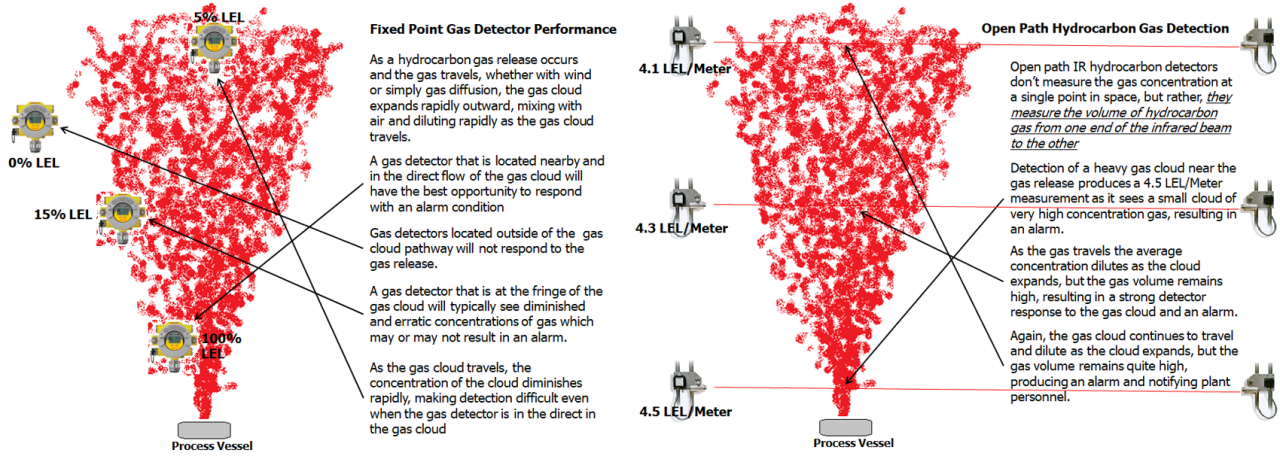Detection & Measurement System News
What Is The Area Coverage Of My Gas Detector?
The area coverage of a point combustible or toxic gas detector is, quite simply, limited to the opening of the gas sensor housing. Point gas detectors do not provide an "area coverage" because they can only respond to gas that travels to the gas sensor and enters the sensor housing. Consequently, the quantity of point gas detectors and where they are located is absolutely key to the performance of your gas detection system.
How many gas detectors to install and where to install them is a complex question that is different for every application and DMS can assist you with that through the gas detector mapping services that we offer from Kenexis. However, one solution that has a tremendous impact on the performance of your hydrocarbon detection system is the Searchline Excel open path infrared hydrocarbon detector. Below is information that provides a "reality check" on the area coverage of point gas detectors and a comparison showing how open path hydrocarbon detection can bridge that gap.
The continuous infrared gas detection beam (projected up to 650' in length) helps to address the "area coverage" issue by enhancing the probability that the gas release will actually encounter a gas detector, significantly improving the likelihood of detection. In addition, because the Searchline Excel open path hydrocarbon detector monitors gas volume across a broad area (not gas concentration at a single point in space) it will respond and alarm to large clouds of very low concentration gas that a point hydrocarbon detector would never respond to with an alarm.
Combined use of point and open path hydrocarbon detectors will (a) usually reduce the quantity of point hydrocarbon detectors, (b) reduce the total quantity of gas detectors overall because of the significant quantity of point detectors that an open path hydrocarbon detector can replace, (c) reduce the quantity of gas detectors requiring maintenance and (d) result in a gas detection system that provides a dramatic increase in the likelihood of the detection of a hydrocarbon release.
To learn more visit the Honeywell information page, use live chat on the bottom-right to ask a question or email This email address is being protected from spambots. You need JavaScript enabled to view it..
By accepting you will be accessing a service provided by a third-party external to http://www.detect-measure.com/



